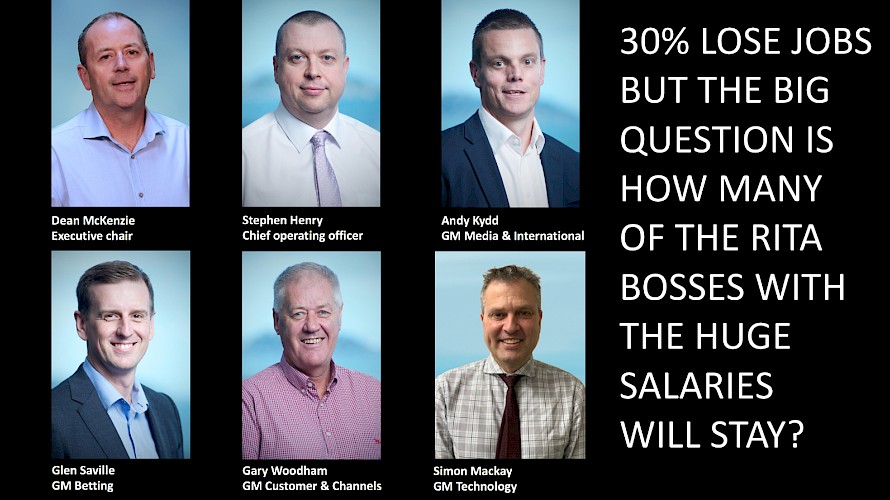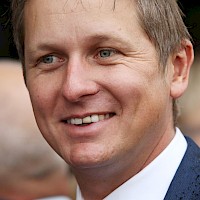
$10 million in savings from TAB staff cuts - with increased centralisation next season
The TAB is expecting its sweeping staff cuts to save $10 million a year.
But while that number suggests redundancies will mostly come at the middle to bottom end, management says it has also begun a review of the executive leadership team.
With a wage bill of $61.5 million last year, a $10 million saving is only a 16% reduction, but the Racing Industry Transition Agency is reducing its head count by 30%.
The top six TAB executives earned a total of nearly $2.5 million between them last season. Former CEO John Allen’s salary was $690,000 to $700,000, the next two earned between $380,000 and $398,000, and three others took home $360,000 to $370,000, $320,000 to $330,000 and $310,000 to $320,000.
Staff were told at a meeting today that all areas of the business and all teams would be impacted.
“There was already a need for RITA/TAB to become a more commercial, leaner business but we’ve had to move towards that point earlier than anticipated with a deeper impact due to Covid-19,” consultation letters said.
“The TAB is an expensive business to run and COVID-19 has come when we have been most vulnerable after a period of significant investment.”
The programme of Government-led transformation had also been delayed.
“We predict revenue next year will be down considerably with domestic racing getting back slowly and at fewer venues, uncertainty around the return of quality domestic and international sport and reduced spending by many New Zealanders.”
55 fewer meetings at fewer venues
RITA indicated that the draft calendar for the 2020-21 season will see 55 fewer gallops and harness meetings held in the North Island, reducing from 321 to 266.
They will also be held at fewer venues, many meetings that require significant travel and accommodation dropped.
That, says RITA, means fewer production staff will be required. A core staff of 30 full and part time employees will be kept in the north, with seasonal and casual cover of up to 13 staff to assist. The changes impact 19 present positions.
In the South Island only 25 core staff will stay, with up to six casuals to cover. This impacts 14 present positions.
Fewer gallops and harness meetings will be held in Otago-Southland, with increased centralisation to Canterbury.
There will also be increased centralisation of greyhound racing in the south to Addington.
RITA plans to service South Island meetings from a team based in Christchurch, which will result in 11 of 13 positions in Dunedin being disestablished. Increased efficiencies will be gained through cross-skilling of roles.
Race filming to deteriorate
Race coverage will be reduced significantly with standard meetings having seven staff and only four cameras - three for judicial functions. That number will increase to the present eight cameras for up to 20 marquee events, with 13 staff. Greyhound meetings will have only three cameras and three staff.
RITA has confirmed it will not reinstate racing on its AM and FM radio frequencies which were suspended last month.
Digital streams, carrying a simulcast of its Trackside channels, would be available only via ROVA, the TAB app or website. All radio specific programming will be lost.
Trackside TV will have a total focus on live racing to drive revenue, with more races to be imported and more hours on air. On course presenters will only be used on up to 20 marquee days, leaving Trackside a race-to-race retail type product.
Staff have been invited to provide feedback on the proposed changes.
Final decisions will be relayed on May 25 and the new structure takes effect on June 22.
More news in Gallops
Tributes pour in for talented apprentice Ngakau Hailey after tragic road accident
Billy primed to give young Jack an early career win at Cambridge on Wednesday
Money comes for Platinum Attack with the promise of better footing at Trentham
Lisa: It’s a hot field but Platinum Attack’s not out of it - and the $23 odds are very tasty
Our runners this week: How our trainer rates them

Stephen’s comments
Thursday at Cambridge synthetic
Race 6:Billy Lincoln
2.25pm
“He’ll jump from seven, put himself right up on the speed, probably lead, and be a very nice each-way chance with a 4kg claim.”


